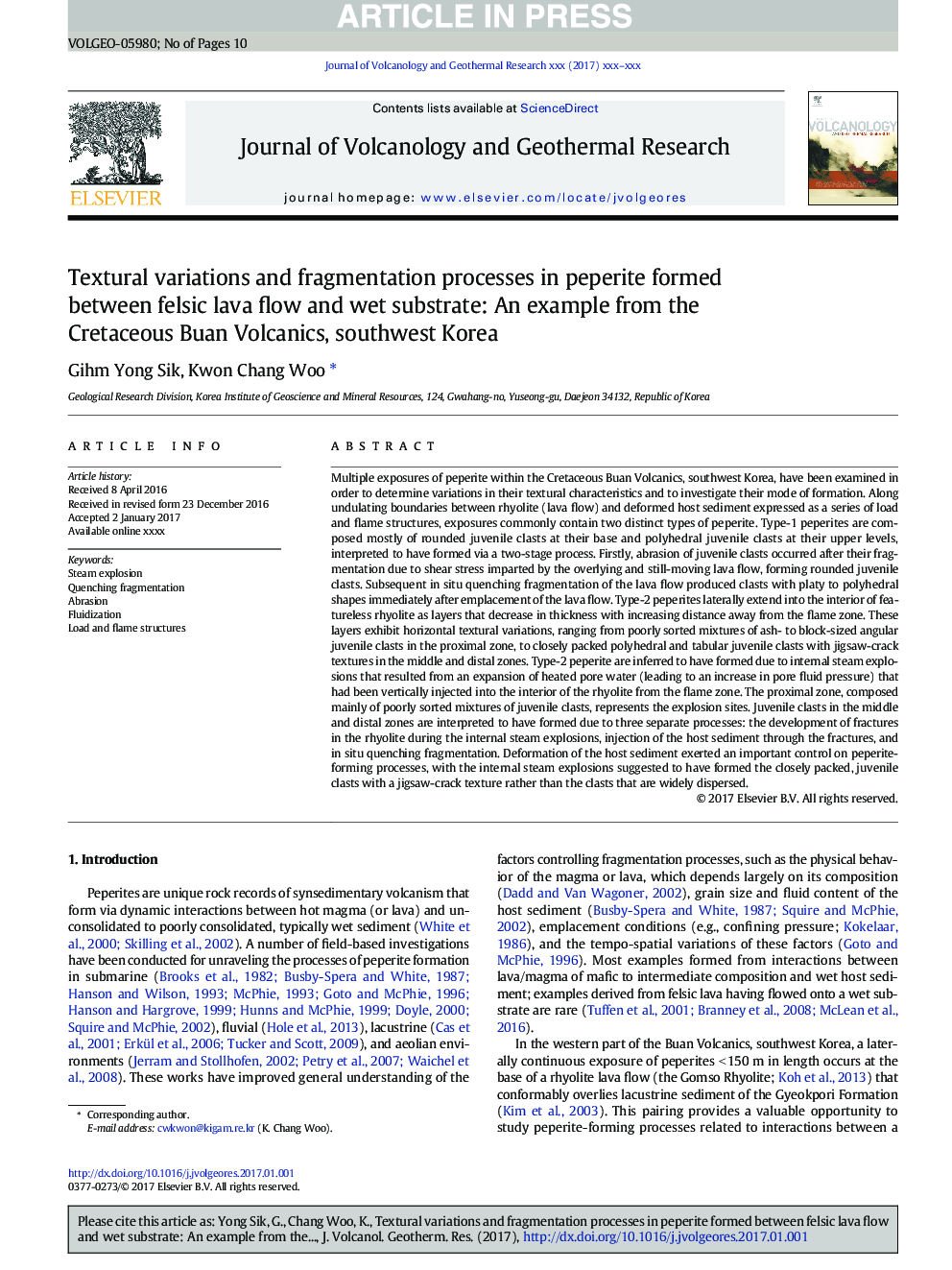| کد مقاله | کد نشریه | سال انتشار | مقاله انگلیسی | نسخه تمام متن |
|---|---|---|---|---|
| 5783943 | 1638291 | 2017 | 10 صفحه PDF | دانلود رایگان |
عنوان انگلیسی مقاله ISI
Textural variations and fragmentation processes in peperite formed between felsic lava flow and wet substrate: An example from the Cretaceous Buan Volcanics, southwest Korea
دانلود مقاله + سفارش ترجمه
دانلود مقاله ISI انگلیسی
رایگان برای ایرانیان
موضوعات مرتبط
مهندسی و علوم پایه
علوم زمین و سیارات
ژئوشیمی و پترولوژی
پیش نمایش صفحه اول مقاله

چکیده انگلیسی
Multiple exposures of peperite within the Cretaceous Buan Volcanics, southwest Korea, have been examined in order to determine variations in their textural characteristics and to investigate their mode of formation. Along undulating boundaries between rhyolite (lava flow) and deformed host sediment expressed as a series of load and flame structures, exposures commonly contain two distinct types of peperite. Type-1 peperites are composed mostly of rounded juvenile clasts at their base and polyhedral juvenile clasts at their upper levels, interpreted to have formed via a two-stage process. Firstly, abrasion of juvenile clasts occurred after their fragmentation due to shear stress imparted by the overlying and still-moving lava flow, forming rounded juvenile clasts. Subsequent in situ quenching fragmentation of the lava flow produced clasts with platy to polyhedral shapes immediately after emplacement of the lava flow. Type-2 peperites laterally extend into the interior of featureless rhyolite as layers that decrease in thickness with increasing distance away from the flame zone. These layers exhibit horizontal textural variations, ranging from poorly sorted mixtures of ash- to block-sized angular juvenile clasts in the proximal zone, to closely packed polyhedral and tabular juvenile clasts with jigsaw-crack textures in the middle and distal zones. Type-2 peperite are inferred to have formed due to internal steam explosions that resulted from an expansion of heated pore water (leading to an increase in pore fluid pressure) that had been vertically injected into the interior of the rhyolite from the flame zone. The proximal zone, composed mainly of poorly sorted mixtures of juvenile clasts, represents the explosion sites. Juvenile clasts in the middle and distal zones are interpreted to have formed due to three separate processes: the development of fractures in the rhyolite during the internal steam explosions, injection of the host sediment through the fractures, and in situ quenching fragmentation. Deformation of the host sediment exerted an important control on peperite-forming processes, with the internal steam explosions suggested to have formed the closely packed, juvenile clasts with a jigsaw-crack texture rather than the clasts that are widely dispersed.
ناشر
Database: Elsevier - ScienceDirect (ساینس دایرکت)
Journal: Journal of Volcanology and Geothermal Research - Volume 331, 1 February 2017, Pages 92-101
Journal: Journal of Volcanology and Geothermal Research - Volume 331, 1 February 2017, Pages 92-101
نویسندگان
Yong Sik Gihm, Chang Woo Kwon,